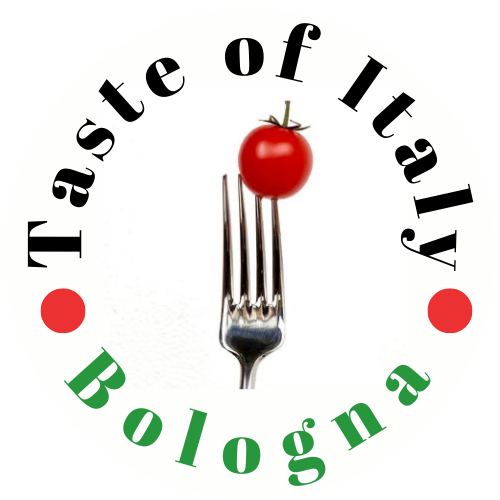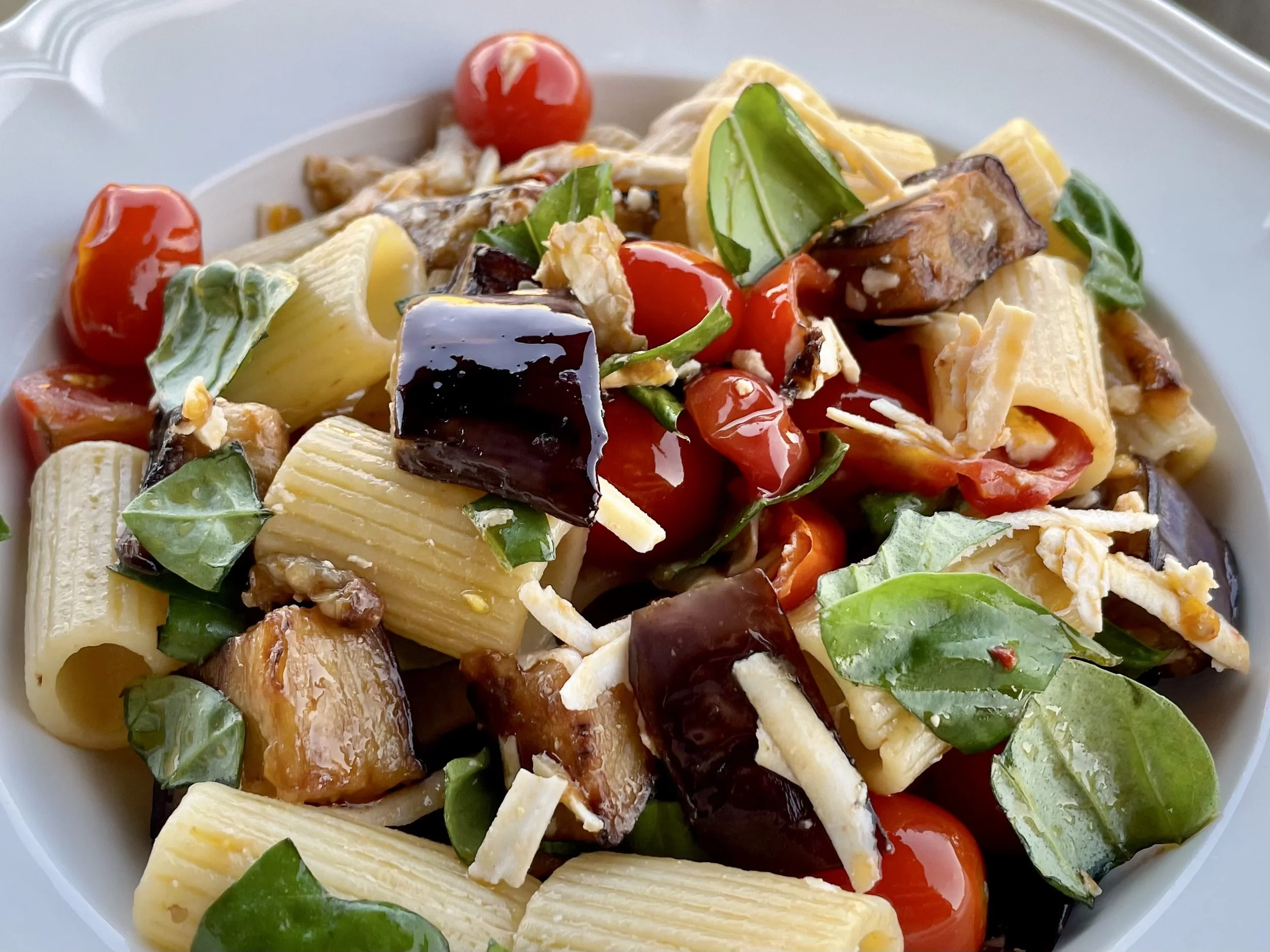Pasta with Eggplants…Puglia style! (Easy recipe)
Incredibly easy and deliciously Italian, this is THE perfect summer dish, it explodes with bright Mediterranean flavors: ripe, juicy tomatoes; sweet aubergines/eggplants, a little hot pepper and a little garlic, lots of fresh basil, a nice tangy sheep’s cheese and excellent tasty extra virgin olive oil.
It is perfect anytime but especially in the summer when the main ingredients are at their peak, flavour and nutrition-wise. This pasta dish is packed with so much flavour, I promise you won't notice there is no meat! Plus it is so versatile, it is equally delicious with handmade fresh egg pasta or dry, hard wheat pasta. I believe it will quickly become your favorite Summer Pasta Sauce.
Inspired by Puglia's (Italy) delicious marangiane con l’agghj ngul, eggplants with garlic, I have revisited that recipe and turned it into a pasta sauce. After over 15 years of making this pasta dish, it remains my students' favorite pasta sauce!
Yes, there is some prep work (that can be done ahead of time) and once that is done, the pasta sauce comes together in 15 minutes. Really!
And before you say: "I do not like aubergines (eggplants) because they get mushy"... try cooking them this way first; when you cook eggplants with very little liquid you will avoid mushy eggplants.
Why I like this dish:
👉 It is equally delicious with both, egg pasta or hard wheat pasta. Try both, tell me which one you prefer!
👉Easy and hardly any cooking involved so perfect for warm summer days. Just the pasta and eggplants need to be cooked, although you can cook the tomatoes, it is equally delicious with raw tomatoes.
👉 It is perfect for meatless Mondays or vegetarian days. All those super tasty ingredients will make your mouth and belly happy and I promise you won’t miss the meat.
👉Super healthy! Fresh seasonal ingredients are high in nutrients, fiber and H2O.
Below you’ll find
VIDEO - RECIPE - ABOUT INGREDIENTS
Ingredients
Serves 4 persons as a first course or 3 as a single course meal.
1 -2 cloves garlic, peeled
1-2 dried hot Italian peppers (pepperoncino)
12-16 ripe tomatoes (see About Ingredients section below)
600g or 2 medium sized sweet aubergine/eggplants (see About Ingredients section below)
a large bunch fresh basil
100/3.5 oz grams of Ricotta salata, Cacioricotta, Pecorino Romano cheese, or very good quality Feta cheese (see About Ingredients section below)
Extra virgin olive oil for cooking
Excellent quality extra virgin olive oil to finish
350 grams of hard wheat pasta or fresh egg pasta.
A short shape with some sort of cavity is ideal such as rigatoni, orecchiette (little ears), bowties or garganelli are ideal.
NOTE: Keep in mind that hard wheat pasta takes longer to cook than fresh egg pasta. Fresh pasta will take 1-3 minutes while it is best to follow package directions when preparing dry hard wheat pasta.
Method
Prepare the ingredients as indicated and set aside, each in its own bowl or dish:
Wash, dry and cut aubergines/eggplants into bite sized cubes,
Wash tomatoes and cut into bite sized pieces, cherry tomatoes get cut in half,
Grate cheese, I like to use the larger holes of the grater,
Remove basil leaves from the stem. Rinse and dry in a salad spinner or with a clean kitchen towel. Tear up the basil into small pieces with your hands.
Get ready to cook
Drizzle about 2 tablespoons of regular olive oil (extra virgin but not the expensive stuff) in a large non-stick skillet.
Crush the garlic with the flat side of a large knife, remove its green germ, if present, and place immediately in the skillet with the the olive oil.
Crush the hot peppers directly into the olive oil. Remember to wash your hands immediately after handling hot pepper because anything you touch will sting (eyes, mouth, nose)!
Warm the skillet over medium-low heat and as it cooks the garlic will begin to become golden (do not let it brown though - that would be a different flavor profile). Once it is golden you may remove it as its done its job of flavoring the olive oil.
At this point add the aubergine/ eggplant and raise the heat to medium-high, stirring regularly to prevent it from sticking. This step requires frequent turning the aubergine/eggplant to ensure it cooks evenly.
TIP: Do not add extra olive oil because the eggplant will absorb the oil and then it becomes a heavy dish. If necessary, lower the heat or stir more frequently.
Bring a large pot of water to a boil. When water boils, add coarse salt (never add oil to the water). If using packaged pasta, add it now and check package directions for cooking time.
After the aubergines are almost cooked (see note below), add the cut tomatoes and cook for a few minutes or as much as you like. Salt lightly and turn off the heat.
NOTE: The Aubergines are done when their exterior is an opaque white and/or browned. You could also put a toothpick or knife through it to test it. If it goes through without resistance, they are done.
Cook your pasta in boiling salted water. Drain when cooked (taste to test doneness). Let’s assemble the dish:
Time to assemble the dish
Immediately toss cooked pasta with cooked aubergine/eggplant and tomatoes, either in the skillet or a large bowl. Toss well.
Add the grated cheese and hand-torn basil; toss well.
Add a generous drizzle of high quality olive oil; toss thoroughly.
TIP: Tossing between ingredients prevents the ingredients from clumping together.
You may add extra cheese to each individual plate. Serve immediately and enjoy!
About Ingredients
BEST AUBERGINES/EGGPLANTS
I recommend seeking out the “sweet” variety of aubergines/eggplants which are either striped (violet and white), all white, or violet with white tinges by the stem area on the outside and completely white on the inside. These varieties do not require salting or peeling to remove bitterness because they are not bitter.
TOMATOES
It is not necessary to cook the tomatoes, specially on a hot day. Raw tomatoes that are ripe and tasty are wonderfully refreshing and also give you a nice variation on this dish. Its always good idea to cut any tomatoes that are big enough into small bite size pieces and salting lightly to help them release their “juice”
CHEESES
Ricotta salata is a dairy product from the Puglia region of Italy. Ricotta salata literally means salty ricotta and while it tastes somewhat salty, its main characteristic is that it is hard because its been seasoned for 30 days and lost up to 50% of the water of regular, fresh ricotta.
If you cannot source ricotta salata you can substitute it with Cacioricotta, a semi-hard savoury ricotta cheese, Pecorino Romano, hard sheep’s cheese from Rome, or a mild Greek Feta cheese made with either sheep or goat or a blend of the two. While these three cheeses have different consistencies from Ricotta salata, they all confer the tasty sharpness required in this dish.
Enjoy! Buon Appetito!
P.S. I would like to know what you think about this dish!


